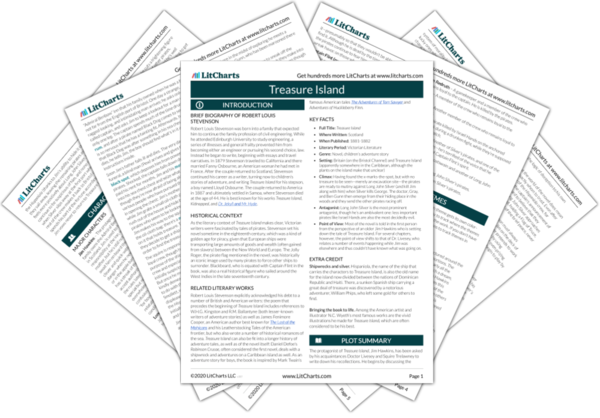Next
Summary
Treasure Island Study Guide |
Next
Summary
|
Welcome to the LitCharts study guide on Robert Louis Stevenson's Treasure Island. Created by the original team behind SparkNotes, LitCharts are the world's best literature guides.

Shipwrecks and silver. Hispaniola, the name of the ship that carries the characters to Treasure Island, is also the old name for the island now divided between the nations of Dominican Republic and Haiti. There, a sunken Spanish ship carrying a great deal of treasure was discovered by a notorious adventurer, William Phips, who left some gold for others to find.
Bringing the book to life. Among the American artist and illustrator N.C. Wyeth’s most famous works are the vivid illustrations he made for Treasure Island, which are often considered to be his best.